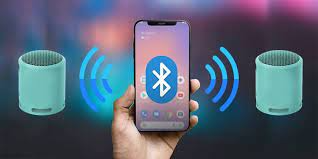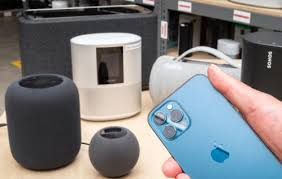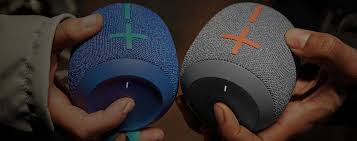Introduction
In today’s era of wireless connectivity, Bluetooth speakers have become a ubiquitous presence in our homes and lives. They offer portability, convenience, and excellent sound quality, but what if you could amplify that experience by connecting two Bluetooth speakers together? Whether you’re hosting a party, watching a movie or just want to fill your space with immersive stereo sound, pairing two Bluetooth speakers can significantly enhance your audio experience. This comprehensive guide will walk you through the process, covering multiple methods for achieving this, from standard Bluetooth pairing to advanced techniques utilizing dedicated apps and hardware.
Method 1: Dual Pairing Feature on Select Speakers
The dual pairing feature is a capability found in some high-quality wireless speakers that allows two identical or compatible speakers to be paired together, creating a stereo sound system. This method offers an enhanced audio experience by assigning one speaker as the left channel and the other as the right channel, thereby widening the soundstage and delivering richer, more balanced audio.
Here’s how to pair two speakers with a dual pairing feature:
Power On Both Speakers:
Ensure both speakers are fully charged and powered on.
Enable Pairing Mode:
Locate the Bluetooth button or pairing mode function on each speaker (this may involve pressing and holding a specific button until an LED indicator flashes). The exact steps vary based on the brand and model of the speaker.
Connect One Speaker:
Using your device (phone, tablet, computer), search for available Bluetooth devices and connect to the first speaker following the usual Bluetooth pairing process.
Activate Dual Pairing:
Once the first speaker is connected, look for a ‘Stereo Pair’ or ‘Dual Pair’ option in the speaker settings or the companion app (if applicable). Activate this function.
Pair the Second Speaker:
The first speaker will now begin searching for its partner. Simultaneously, put the second speaker into pairing mode. The two speakers should recognize each other and automatically form a stereo pair.
Confirmation:
After they’ve successfully paired, you’ll typically hear a confirmation tone or see a change in the LED indicators, signifying that the dual pairing has been established.
Test the Sound:
Play music from your device, and you should hear a clear distinction between left and right channels, indicating that the dual pairing feature is working correctly.
Keep in mind that not all wireless speakers support this feature. Be sure to check the product specifications or user manual before attempting to pair two speakers in this manner.
Method 2: Bluetooth Multipoint Connectivity
Bluetooth multipoint connectivity is a feature that allows a single device, such as a wireless headset or speaker, to connect and maintain an active connection with two or more source devices simultaneously. This method enables you to switch between audio outputs without needing to disconnect from one device and reconnect to another.
Here’s how to use Bluetooth multipoint connectivity:
Enable Bluetooth on Devices:
Turn on Bluetooth on all the devices (e.g., smartphones, laptops) you want to pair with your headset or speaker.
Pair First Device:
Initiate pairing mode on your headset/speaker (usually by pressing and holding the power button or a dedicated Bluetooth button until it starts flashing). On your first device, search for available Bluetooth devices and select your headset/speaker to pair them.
Connect Second Device:
After the first device is connected, check if your headset/speaker supports multipoint connectivity in its settings or manual. If so, proceed to pair it with the second device using the same process.
Maintain Connection:
A multipoint-enabled device will be able to manage both connections at once. For instance, if you’re listening to music on your phone and receive a call on your laptop, the headset will automatically switch to the laptop for the call.
Switching Between Devices:
Depending on the device, you may manually switch audio output between the paired devices through the audio settings on each device, or sometimes the headset itself has controls to switch between sources.
It’s important to note that not all Bluetooth devices support multipoint connectivity. Check the product specifications before purchasing to ensure this feature is included. Also, while multipoint can handle multiple connections, it typically only streams audio from one device at a time.
Method 3: Using Bluetooth Transmitter Devices
For speakers that don’t inherently support dual pairing, a Bluetooth transmitter can bridge the gap. These transmitters allow you to split the audio signal and send it to two different Bluetooth speakers.
- Select a Bluetooth Transmitter: Choose a high-quality Bluetooth transmitter that supports A2DP and aptX codecs for better audio quality.
- Pair Transmitter with Speakers: Plug the transmitter into your audio source (phone, laptop, etc.) and pair it separately with each speaker.
- Sync Playback: Some transmitters may have an option to sync playback between the two speakers, ensuring they remain in sync during playback.
Method 4: Connecting Through Apps
Several manufacturers, such as Ultimate Ears and JBL, provide proprietary apps that enable users to link their speakers together.
- Download App: Install the manufacturer’s app onto your smartphone or tablet.
- Connect Speakers: In the app, follow the instructions to add and connect your speakers to the network.
- Configure Stereo Sound: If available, configure the speakers to work in stereo mode within the app.

Method 5: Auxiliary Input and Output Jacks
If your speakers have auxiliary inputs and outputs, you can physically chain them together using a 3.5mm audio cable:
- Connect Cables: Plug one end of the cable into the audio output jack of the first speaker and the other end into the input jack of the second speaker.
- Enable Line-Out or Aux Mode: On the first speaker, switch to line-out or aux mode so it only passes the audio signal along and doesn’t attempt to amplify it.
- Use Bluetooth Normally: Now, Bluetooth-connect your device to the first speaker, and the audio will pass through both speakers.
Method 6: External Hardware Solutions
There are also third-party multi-room audio systems like Sonos, Bose SoundTouch, or Denon HEOS which use Wi-Fi instead of Bluetooth. While these aren’t strictly Bluetooth solutions, they can integrate Bluetooth speakers into a whole-home audio system where multiple speakers can be controlled and synced together.
- Purchase Multi-Room System: Invest in a multi-room audio hub that supports Bluetooth speaker integration.
- Setup Process: Follow the manufacturer’s instructions to set up the system and add your Bluetooth speakers to it.
- Control and Sync: Use the app provided to control and sync playback across all your speakers.

Conclusion
Connecting two Bluetooth speakers isn’t always straightforward, but with the right equipment and knowledge, it’s definitely achievable. Whether you opt for native dual pairing, multipoint connectivity, or employ external hardware, the result is an enhanced listening experience that transforms your home into a concert hall or cinema room. Always remember to check your speaker’s specifications and consider your personal preferences when choosing the best solution. Happy listening!